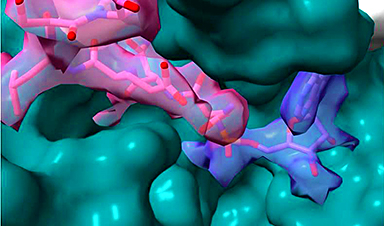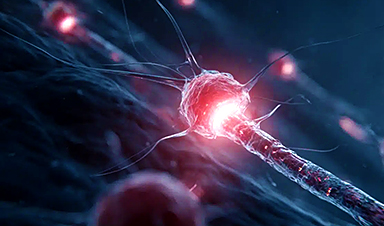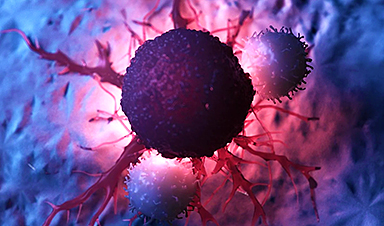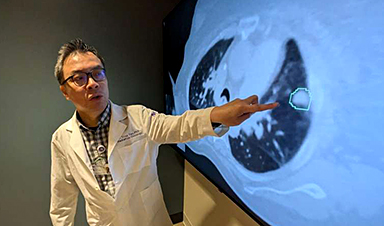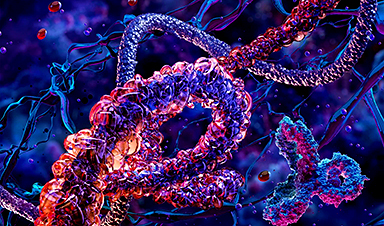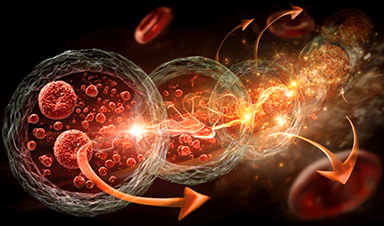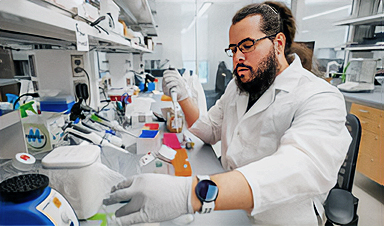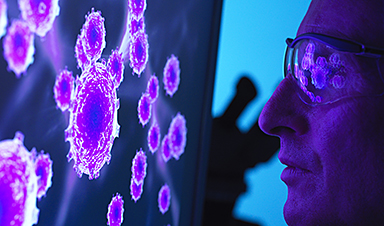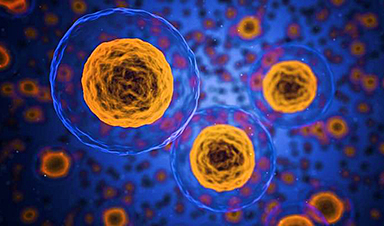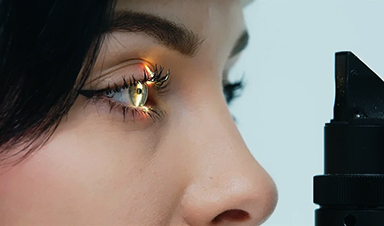A new study provides further evidence that consciousness depends on communication between the brain’s sensory and cognitive regions in the cortex.
Our brains are constantly making predictions about our surroundings, enabling us to focus on and respond to unexpected events. A recent study explores how this predictive process functions during consciousness and how it changes under general anesthesia. The findings support the idea that conscious thought relies on synchronized communication between basic sensory areas and higher-order cognitive regions of the brain, facilitated by brain rhythms in specific frequency bands.
Previously, members of the research team at The Picower Institute for Learning and Memory at MIT and at Vanderbilt University had described how brain rhythms enable the brain to remain prepared to attend to surprises. Cognition-oriented brain regions (generally at the front of the brain), use relatively low-frequency alpha and beta rhythms to suppress processing by sensory regions (generally toward the back of the brain) of stimuli that have become familiar and mundane in the environment (e.g. your co-worker’s music). When sensory regions detect a surprise (e.g. the office fire alarm), they use faster frequency gamma rhythms to tell the higher regions about it and the higher regions process that at gamma frequencies to decide what to do (e.g. exit the building).
Anesthesia’s Impact on Brain Communication
The new results published Oct. 7 in the Proceedings of the National Academy of Sciences, show that when animals were under propofol-induced general anesthesia, a sensory region retained the capacity to detect simple surprises but communication with a higher cognitive region toward the front of the brain was lost, making that region unable to engage in its “top-down” regulation of the activity of the sensory region and keeping it oblivious to simple and more complex surprises alike.
“What we are doing here speaks to the nature of consciousness,” said co-senior author Earl K. Miller, Picower Professor in The Picower Institute for Learning and Memory and MIT’s Department of Brain and Cognitive Sciences. “Propofol general anesthesia deactivates the top-down processes that underlie cognition. It essentially disconnects communication between the front and back halves of the brain.”

Co-senior author Andre Bastos, an assistant professor in the psychology department at Vanderbilt and a former member of Miller’s MIT lab, added that the study results highlight the key role of frontal areas in consciousness.
“These results are particularly important given the newfound scientific interest in the mechanisms of consciousness, and how consciousness relates to the ability of the brain to form predictions,” Bastos said.
The brain’s ability to predict is dramatically altered during anesthesia. It was interesting that the front of the brain, areas associated with cognition, were more strongly diminished in their predictive abilities than sensory areas. This suggests that prefrontal areas help to spark an ‘ignition’ event that allows sensory information to become conscious. Sensory cortex activation by itself does not lead to conscious perception. These observations help us narrow down possible models for the mechanisms of consciousness.”
Yihan Sophy Xiong, a graduate student in Bastos’s lab who led the study. said the anesthetic reduces the times in which inter-regional communication within the
“In the awake brain, brain waves give short windows of opportunity for neurons to fire optimally – the ‘refresh rate’ of the brain, so to speak,” Xiong said “This refresh rate helps organize different brain areas to communicate effectively. Anesthesia both slows down the refresh rate, which narrows these time windows for brain areas to talk to each other, and makes the refresh rate less effective, so that neurons become more disorganized about when they can fire. When the refresh rate no longer works as intended, our ability to make predictions is weakened.”
Learning from oddballs
To conduct the research, the neuroscientists measured the electrical signals, “or spiking,” of hundreds of individual neurons and the coordinated rhythms of their aggregated activity (at alpha/beta and gamma frequencies), in two areas on the surface, or cortex, of the brain of two animals as they listened to sequences of tones. Sometimes the sequences would all be the same note, (e.g. AAAAA). Sometimes there’d be a simple surprise that the researchers called a “local oddball” (e.g. AAAAB). But sometimes the surprise would be more complicated, or a “global oddball.” For example, after seeing a series of AAAABs, there’d all of a sudden be AAAAA, which violates the global but not the local pattern.
Prior work has suggested that a sensory region (in this case the temporoparietal area, or Tpt) can spot local oddballs on its own, Miller said. Detecting the more complicated global oddball requires the participation of a higher-order region (in this case the Frontal Eye Fields, or FEF).
The animals heard the tone sequences both while awake and while under propofol anesthesia. There were no surprises about the waking state. The researchers reaffirmed that top-down alpha/beta rhythms from FEF carried predictions to the Tpt and that Tpt would increase gamma rhythms when an oddball came up, causing FEF (and the prefrontal cortex) to respond with upticks of gamma activity as well.
But by several measures and analyses, the scientists could see these dynamics break down after the animals lost consciousness.
Under propofol, for instance, spiking activity declined overall but when a local oddball came along, Tpt spiking still increased notably but now spiking in FEF didn’t follow suit as it does during wakefulness.
Meanwhile, when a global oddball was presented during wakefulness, the researchers could use software to “decode” representation of that among neurons in FEF and the prefrontal cortex (another cognition-oriented region). They could also decode local oddballs in the Tpt. But under anesthesia the decoder could no longer reliably detect representation of local or global oddballs in FEF or the prefrontal cortex.
Moreover, when they compared rhythms in the regions amid wakeful vs. unconscious states they found stark differences. When the animals were awake, oddballs increased gamma activity in both Tpt and FEF and alpha/beta rhythms decreased. Regular, non-oddball stimulation increased alpha/beta rhythms. But when the animals lost consciousness the increase in gamma rhythms from a local oddball was even greater in Tpt than when the animal was awake.
“Under propofol-mediated loss of consciousness, the inhibitory function of alpha/beta became diminished and/or eliminated, leading to disinhibition of oddballs in sensory cortex,” the authors wrote.
Other analyses of inter-region connectivity and synchrony revealed that the regions lost the ability to communicate during anesthesia.
In all, the study’s evidence suggests that conscious thought requires coordination across the cortex, from front to back, the researchers wrote.
“Our results therefore suggest an important role for prefrontal cortex activation, in addition to sensory cortex activation, for conscious perception,” the researchers wrote.
Reference: “Propofol-mediated loss of consciousness disrupts predictive routing and local field phase modulation of neural activity” by Yihan (Sophy) Xiong, Jacob A. Donoghue, Mikael Lundqvist, Meredith Mahnke, Alex James Major, Emery N. Brown, Earl K. Miller and André M. Bastos, 7 October 2024, Proceedings of the National Academy of Sciences.
DOI: 10.1073/pnas.2315160121
In addition to Xiong, Miller and Bastos, the paper’s other authors are Jacob Donoghue, Mikael Lundqvist, Meredith Mahnke, Alex Major and Emery N. Brown.
The National Institutes of Health, The JPB Foundation, and The Picower Institute for Learning and Memory funded the study.
News
Team finds flawed data in recent study relevant to coronavirus antiviral development
The COVID pandemic illustrated how urgently we need antiviral medications capable of treating coronavirus infections. To aid this effort, researchers quickly homed in on part of SARS-CoV-2's molecular structure known as the NiRAN domain—an [...]
Drug-Coated Neural Implants Reduce Immune Rejection
Summary: A new study shows that coating neural prosthetic implants with the anti-inflammatory drug dexamethasone helps reduce the body’s immune response and scar tissue formation. This strategy enhances the long-term performance and stability of electrodes [...]
Scientists discover cancer-fighting bacteria that ‘soak up’ forever chemicals in the body
A family of healthy bacteria may help 'soak up' toxic forever chemicals in the body, warding off their cancerous effects. Forever chemicals, also known as PFAS (per- and polyfluoroalkyl substances), are toxic chemicals that [...]
Johns Hopkins Researchers Uncover a New Way To Kill Cancer Cells
A new study reveals that blocking ribosomal RNA production rewires cancer cell behavior and could help treat genetically unstable tumors. Researchers at the Johns Hopkins Kimmel Cancer Center and the Department of Radiation Oncology and Molecular [...]
AI matches doctors in mapping lung tumors for radiation therapy
In radiation therapy, precision can save lives. Oncologists must carefully map the size and location of a tumor before delivering high-dose radiation to destroy cancer cells while sparing healthy tissue. But this process, called [...]
Scientists Finally “See” Key Protein That Controls Inflammation
Researchers used advanced microscopy to uncover important protein structures. For the first time, two important protein structures in the human body are being visualized, thanks in part to cutting-edge technology at the University of [...]
AI tool detects 9 types of dementia from a single brain scan
Mayo Clinic researchers have developed a new artificial intelligence (AI) tool that helps clinicians identify brain activity patterns linked to nine types of dementia, including Alzheimer's disease, using a single, widely available scan—a transformative [...]
Is plastic packaging putting more than just food on your plate?
New research reveals that common food packaging and utensils can shed microscopic plastics into our food, prompting urgent calls for stricter testing and updated regulations to protect public health. Beyond microplastics: The analysis intentionally [...]
Aging Spreads Through the Bloodstream
Summary: New research reveals that aging isn’t just a local cellular process—it can spread throughout the body via the bloodstream. A redox-sensitive protein called ReHMGB1, secreted by senescent cells, was found to trigger aging features [...]
AI and nanomedicine find rare biomarkers for prostrate cancer and atherosclerosis
Imagine a stadium packed with 75,000 fans, all wearing green and white jerseys—except one person in a solid green shirt. Finding that person would be tough. That's how hard it is for scientists to [...]
Are Pesticides Breeding the Next Pandemic? Experts Warn of Fungal Superbugs
Fungicides used in agriculture have been linked to an increase in resistance to antifungal drugs in both humans and animals. Fungal infections are on the rise, and two UC Davis infectious disease experts, Dr. George Thompson [...]
Scientists Crack the 500-Million-Year-Old Code That Controls Your Immune System
A collaborative team from Penn Medicine and Penn Engineering has uncovered the mathematical principles behind a 500-million-year-old protein network that determines whether foreign materials are recognized as friend or foe. How does your body [...]
Team discovers how tiny parts of cells stay organized, new insights for blocking cancer growth
A team of international researchers led by scientists at City of Hope provides the most thorough account yet of an elusive target for cancer treatment. Published in Science Advances, the study suggests a complex signaling [...]
Nanomaterials in Ophthalmology: A Review
Eye diseases are becoming more common. In 2020, over 250 million people had mild vision problems, and 295 million experienced moderate to severe ocular conditions. In response, researchers are turning to nanotechnology and nanomaterials—tools that are transforming [...]
Natural Plant Extract Removes up to 90% of Microplastics From Water
Researchers found that natural polymers derived from okra and fenugreek are highly effective at removing microplastics from water. The same sticky substances that make okra slimy and give fenugreek its gel-like texture could help [...]
Instant coffee may damage your eyes, genetic study finds
A new genetic study shows that just one extra cup of instant coffee a day could significantly increase your risk of developing dry AMD, shedding fresh light on how our daily beverage choices may [...]

